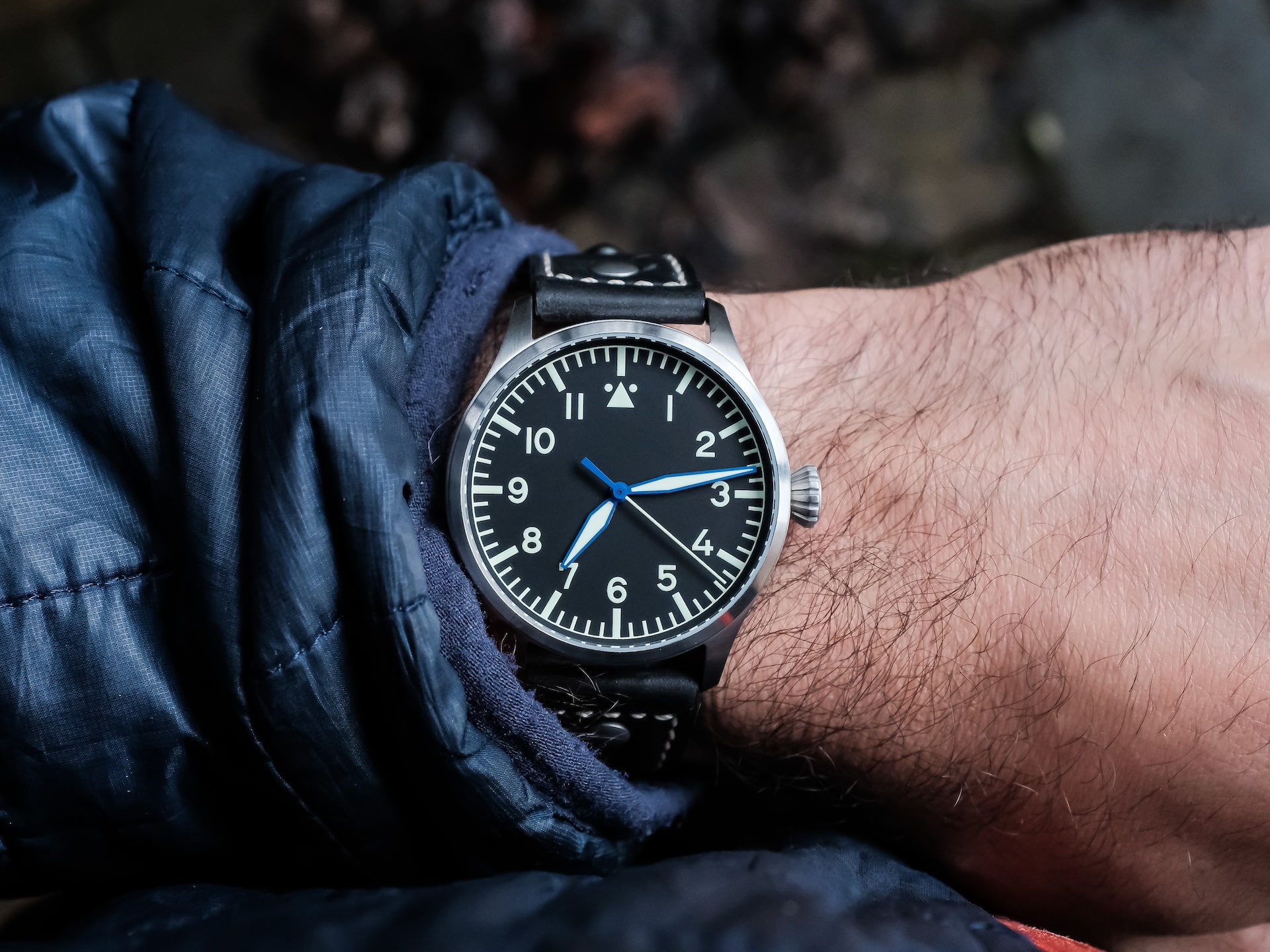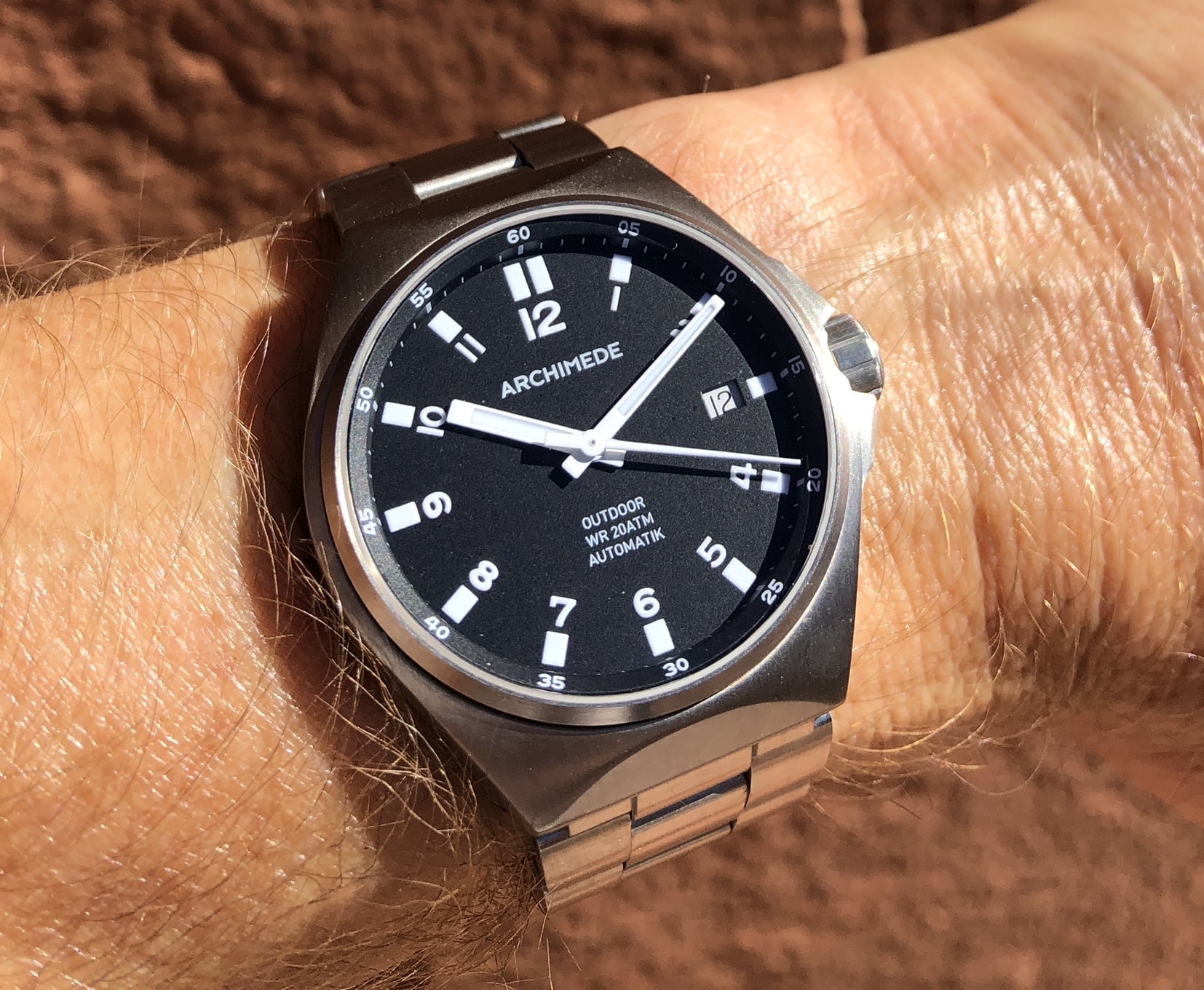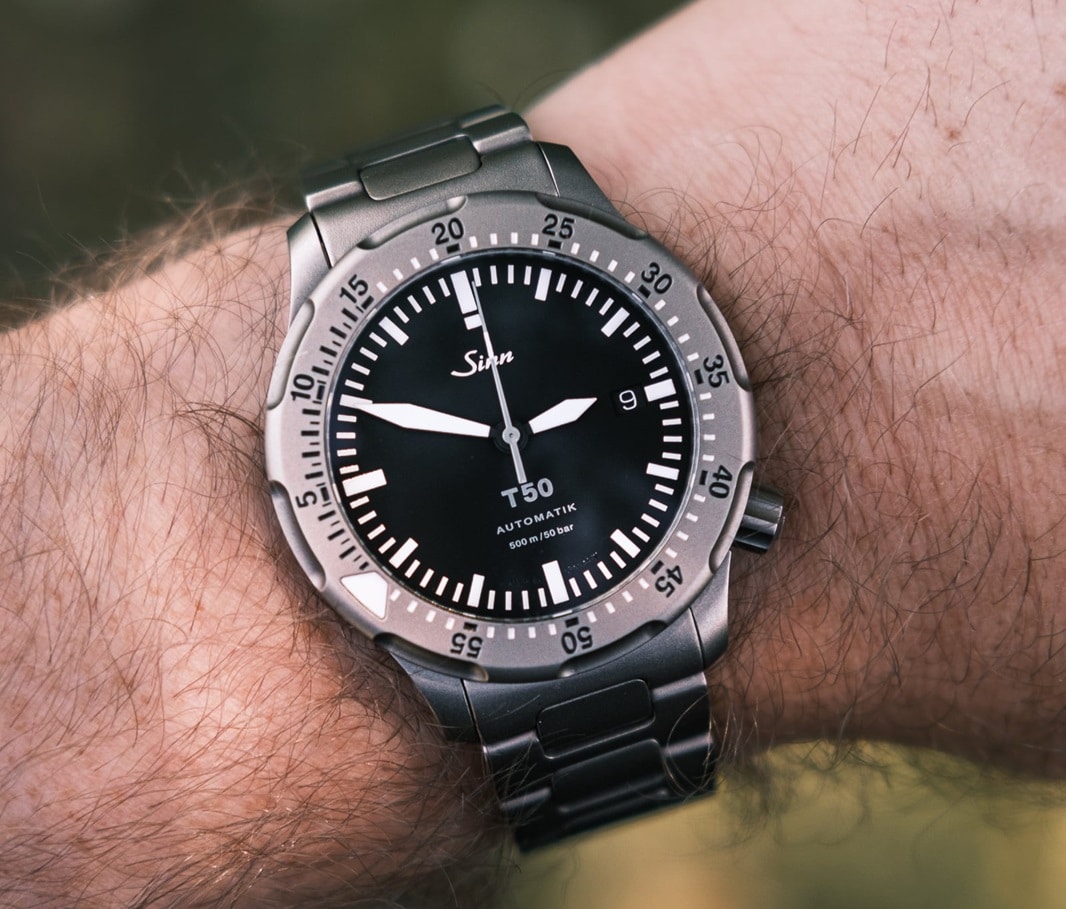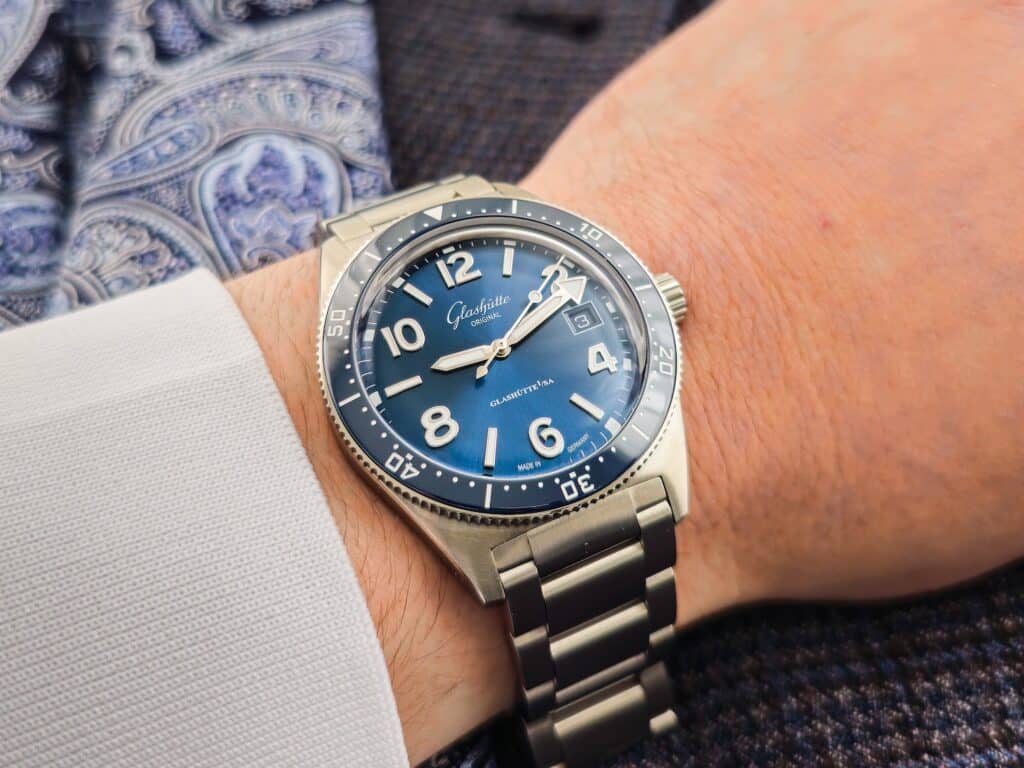German watchmaking spans minimalist design, military function, and high-end mechanical craftsmanship, but many of its best brands remain under-discussed outside dedicated circles. That’s why we created this list to reflect our review team’s hands-on evaluation and long-term testing of what we consider the best German watch brands – not just for quality, but for overall value.

Throughout the piece, two key geographic anchors will be frequently mentioned: Glashütte and Pforzheim. Both cities shaped German watchmaking in distinct ways. Glashütte did so through mid-19th century horological innovation and education, and Pforzheim through its earlier roots in precision tooling and jewelry. Their respective roles (and how each region was reshaped after WWII) help contextualize the design philosophies, pricing strategies, and brand identities you’ll encounter below.
Laco

As one of five original German watch brands licensed to supply the German Airforce during WWII, Laco’s DNA is built on functionality and strict adherence to form. What stands out today from the Laco pieces that we’ve tested is how little that design language and ethos has changed. Their modern Fliegers still feature oversized crowns, bead-blasted cases, and crisply legible Type A and Type B dials. The big difference that you’ll appreciate when you wear them is now they come in wearable case sizes (the originals were quite large) with thoughtful updates like sapphire crystals, signed strap hardware, and surprisingly light wrist presence.
What’s remarkable about Laco is that they are also one of the most budget friendly German watch brands available with prices starting around $400. Much of this is possible through their use of Miyota-based automatics across their entry-level models, which helps keep the costs very reasonable. What makes Laco distinct in the German watch space isn’t how much they innovate in horological techniques or alternative material usage, but rather how deliberately they balance historical accuracy with everyday usability. That’s why for anyone weighing legacy, legibility, and cost, Laco offers one of the most direct and affordable entries into an authentic lineage of military watchmaking. We have more hands-on insights and experiences with Laco in our Aachen 42 review.
Steinhart

For a brand that only launched in 2001, Steinhart is functionally one of the newer names in German watchmaking, especially compared to many of its peers with roots in Glashütte or Pforzheim. But what the brand lacks in lineage, it makes up for in execution. From the core pieces we’ve experienced on-wrist, what sets Steinhart apart obviously isn’t design originality, but in how they execute. The brand makes no secret of its Rolex homage roots, but where others stop at merely capturing classic watch shapes and silhouette (without worrying about function), Steinhart leans in. Across the pieces we’ve tested, we’ve consistently felt the difference on wrist – brushed 316L cases with sharp transitions, engraved casebacks, and matte dials with crisp applied markers create watches that wear with real substance.
Across their GMTs and divers that we’ve tested, we’ve consistently seen overbuilt bracelets with solid end links, thoughtful bracelet tapering, and screw-adjustable links, all of which are rare finds for the price. What you’ll appreciate is that these are watches produced by a small, core team that’s able to course-correct mid-production. This means they’re incredibly adept at producing small to medium size runs of their timepieces that feature incredible quality control and tight fit and finish for a reasonable price (starting around $550). You can read more about our hands-on experiences with both the Ocean 39 GMT and the Ocean One Red Vintage to get a better sense of the brand.
Archimede

If you’ve ever wondered what happens when a century-old German case maker decides to build entire watches under its own name, Archimede is the answer. What we’ve always appreciated about their design choices is that they feel more like an engineer’s checklist rather than a marketing brief – matte dials that stay legible in all light, real heat-blued hands, and crowns that thread in with confidence. The continuously family-run Ickler operation still machines every case in-house, and it’s something that always stands out to us in our hands-on testing. Brushed surfaces are clean, tolerances are tight, and hardened steel models like the Outdoor Protect held up to everything from hiking to car work without flinching.
One area where we see them not necessarily excelling as much as their horological German counterparts is their leather straps, which isn’t entirely surprising given that as a case manufacturer, their core strength is in metal working. However, all the pros around everything else the brand gets right outweighs the straps. The brand does represent a bit of a price jump with prices starting around $1000, but that’s mainly because they use Sellita and ETA movements and they are crafting these timepieces to stand up to all types of everyday and stressful environments. You can read more about that in our reviews of the Outdoor Protect (a personal favorite) and Pilot 39.
Sinn

Reviewing Sinn always feels less like evaluating watches and more like assessing equipment for us. These aren’t styled-up fashion accessories – they’re engineered objects, shaped by specific constraints and designed to hold up under pressure and perform when required. Across everything we’ve tested, from reimagined, modern pilot models to tech-heavy divers, there’s a consistency in purpose as noted with features like bead-blasted steel, countdown bezels on ball bearings, and hands designed for legibility speed, not style. Materials are never generic. We’ve tested pieces from them that feature tegimented titanium, nitrogen-filled cases, anti-magnetic shielding, and copper sulfate capsules that monitor internal moisture. These are details that speak to harsh-demanding usage and not just brochure specs. There is a reason why Sinn is often the timepiece of choice among German armed forces.
There are some quirks that we’ve noted in our testing. Sometimes the clearance between cases and straps can be tight – bracelet clasps can also sometimes feel complicated if you aren’t used to them. But truthfully, these are more the result of overbuilding and not necessarily oversight. What ultimately sets Sinn apart in practice isn’t just the tech – it’s the sense that every design decision was made by someone who’s actually had to rely on a watch. Entry-level pricing typically starts around $1,500, which places Sinn among the more accessible options in the professional tool watch category. We have full, hands-on testing reviews of the 104 diver, EZM 3F, and T50 where you can learn more about our experiences with the brand.
NOMOS Glashütte

Nomos is what happens when a brand decides it will both preserve German watch making heritage while also rebuilding it with its own hands. You’ll notice that every model carries the mark of Glashütte engineering, but instead of going maximalist with their approach, Nomos builds from a quieter confidence: long lugs, deep dials, and architecture that speaks in clean lines instead of loud statements. Over the course of hands-on testing Nomos timepieces we find this subdued build approach enhanced by how they channel Bauhaus design philosophy not as an ornamental flourish, but a framework. Everything serves a function and nothing exists just to decorate. From the Bauhaus dial layouts to the ultra-slim in-house movements adjusted in six positions, there’s a sense that these watches were made for people who care just as much about how things work as why.
You also won’t find aggressive branding or precious metals with Nomos. Instead you get polished steel, premium shell cordovan straps, and a range of in-house movements from a simple 3-hander alongside more intricate complications like a push-button dual time zone. Now, there are some trade-offs when you go with a brand like Nomos. They often don’t feature the greatest water resistance and the polished cases can pick up scratches and signs of wear if you aren’t careful. Plus, the brand’s predilection for a longer lug-to-lug measurement might push comfort boundaries on smaller wrists. But Nomos really isn’t for everyone. Prices start around $1500 and the designs are more suited to casual or professional settings, which makes the target audience here more focused. Among other watch brands around the world though, the amount of in-house manufacturing and keen design work at play here does offer a lot of value for the price. We’ve had the pleasure of visiting their showroom in Germany and you can read more of our hands-on experience in our Zurich World Time review.
Glashütte Original

We’ve been reviewing watches long enough to know when a brand is trying too hard to impress you – we can also tell when a brand doesn’t really need to. Born from the ashes of East Germany’s postwar watch industry and rebuilt as a modern manufacture in the heart of Saxony, Glashütte Original doesn’t flood the market to capture trends or really to try and compete with anyone else. Instead, they focus energy where most brands cut corners: detailed case contouring, refined clasp ergonomics, and finishing detail.
During hands-on time with their SeaQ diver, what stood out to us wasn’t just the watch’s function – but how deliberately it was built to do it. Brushing across the midcase had a deep, gear-like grain that felt tactile, not cosmetic. Screws were used to hold bracelet links together, but positioned on the underside so nothing interrupted the exterior polish. Even the clasp featured on-wrist adjustability with no outwardly visible mechanisms to do so, preserving the streamlined look of the watch without negatively impacting its design. Now, Glashütte Original does represent the near peak of high-end German watchmaking, which is reflected in its entry level price of around $6500. However, the attention to detail, high-integrity engineering, and small-scale production of the brand creates a lot more value than you’d expect when compared to other Swiss brands who will often charge more for far less. Our SeaQ hands-on testing experience highlights this in more detail.

Co-Founder and Senior Editor
Kaz has been collecting watches since 2015, but he’s been fascinated by product design, the Collector’s psychology, and brand marketing his whole life. While sharing the same strong fondness for all things horologically-affordable as Mike (his TBWS partner in crime), Kaz’s collection niche is also focused on vintage Soviet watches as well as watches that feature a unique, but well-designed quirk or visual hook.

Good article. One brand that stood out as missing from this lineup is Sternglas. They’re a microbrand that’s been around since 2016 does very reasonably priced Bauhaus-inspired watches.
What about Hanhart pioneer 9 for example
Richard:
Oh, yes – Hanhart! Let me do some research and include them in the next update for this piece.
Thank you,
-Kaz
I just know some day I’m going to end up with a Sinn, but I’m torn on which model. I lean toward the 556 A RS, but the 856 with the tegimented steel, higher end movement, etc. is appealing. I’d ultimately love a Nomos Orion as a dress watch, but it’s hard to justify the expense on something I would only occasionally wear. I almost never go into an office, nor am I going to any fancy events. I know I could wear it more than that, but I have plenty of other casual watches to wear on the daily. I think Damasko should get more love, but I also think they should offer more models that come with a bracelet. The Archimede Outdoor is a very cool watch, and I am surprised I don’t see people post about it more frequently. It’s kind of got this Bauhaus design combined with the rugged Alpinist feature set (200m WR, etc.). The 39mm Outdoor model has a ton of cool variants, and it seems priced more like Sinn was when I first got into this stuff in 2018.